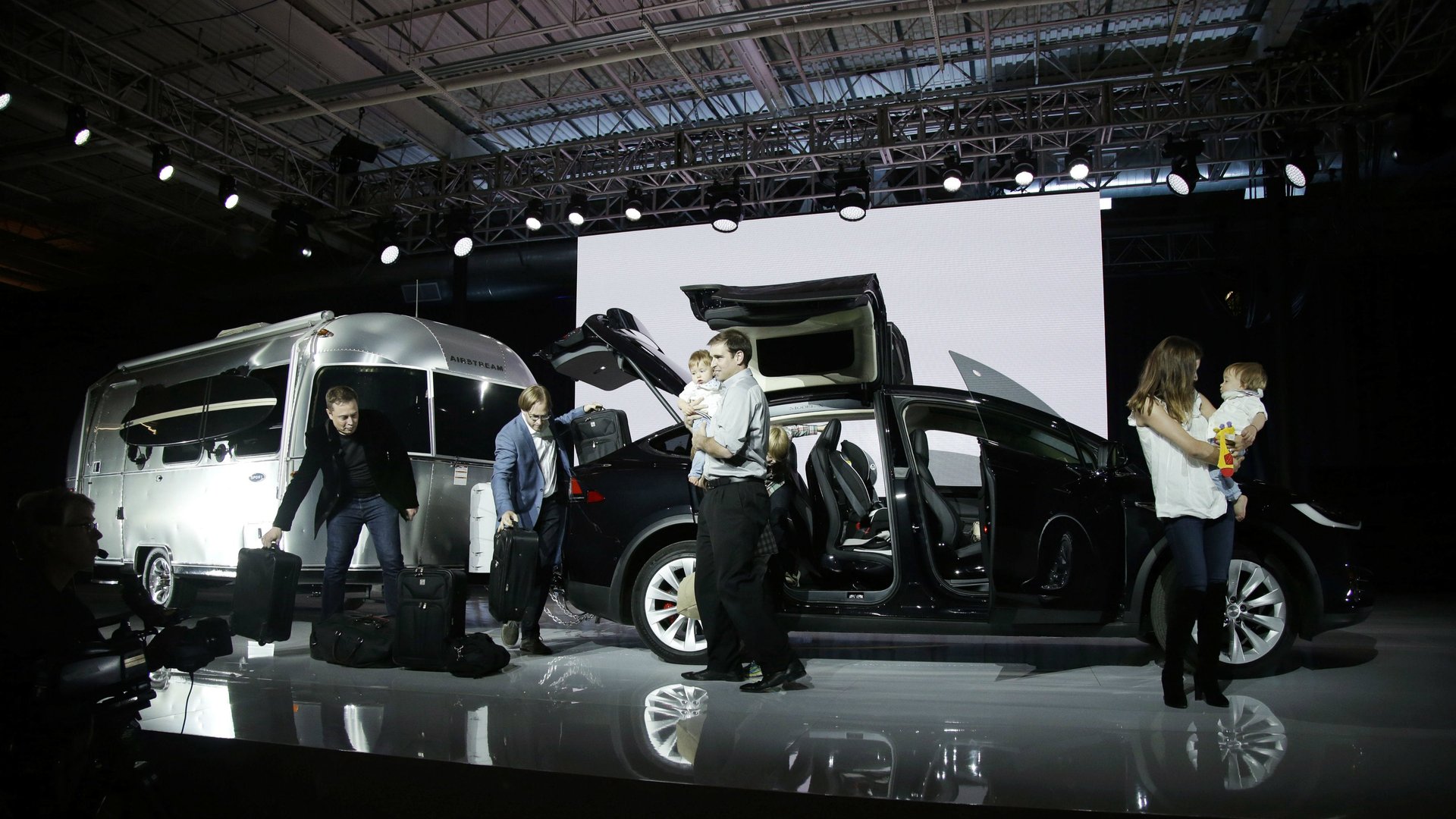Elon Musk wants to scare women from buying any SUV besides his Tesla Model X
With his latest vehicle, the Model X, Tesla CEO Elon Musk essentially aims to plant a fearful question in the minds of every mother with $100,000 to spend on a premium SUV: Are you prepared to risk the safety of your child by driving anything else?


With his latest vehicle, the Model X, Tesla CEO Elon Musk essentially aims to plant a fearful question in the minds of every mother with $100,000 to spend on a premium SUV: Are you prepared to risk the safety of your child by driving anything else?
This was the subtext to his 30-minute presentation of the Model X on Sept. 29 at his factory in Fremont, California. For the first 11 full minutes of the event, Musk uncharacteristically left out any mention of being cool, driving ludicrously fast, or benefitting from the choice to go electric. Instead, he focused only on safety, and for good reason—women buy 53% of the small SUVs sold in the US, and safety is one their chief concerns.
Musk called the Model X “the safest SUV on the planet,” and said he expects US regulators to award it with the highest five-star rating in every safety category. To get there, Musk loaded the vehicle with eight airbags, plus a crash-sensing system comprised of cameras, radar, and sonar that automatically applies the brakes when needed. He designed a front trunk and body structure that are meant to absorb impacts. And thousands of batteries are stored in the floorboard, which gives the vehicle a low center of gravity and makes it highly resistant to rolling over.
In keeping with Musk’s penchant for features that grab attention but almost certainly will rarely be used (see the extremely high speeds achievable when driving in ludicrous mode) the X even includes a “Bioweapon Defense Mode.” It’s a button that triggers a medical-grade filter to keep out fatal impurities from the outside.
The overall impact seems likely to raise the bar for every SUV. Just as scare stories have driven parents to no longer freely allow their kids to roam the streets, the thought subjecting your children to a ride that can’t take the hit from a pole lodged into its side—or offer protection in the event of a chemical weapons attack—might make you wary about driving an SUV lacking such features. And competing automakers may thus have to produce them.